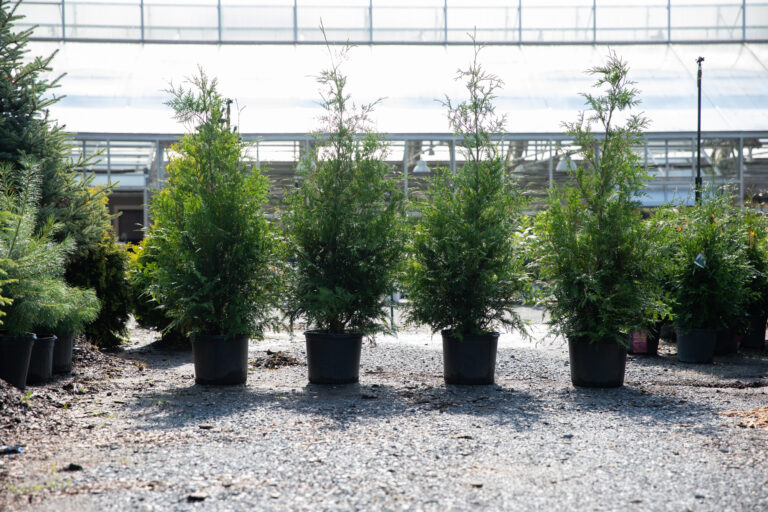Planting Trees & Shrubs

Whether you pick up a small shrub or a larger tree, the process for installing a woody plant (one with firm, hard-to-bend branches) is pretty similar for all, evergreen or deciduous.
-
Dig a hole twice as wide as the root ball or container but no deeper. The top of the root ball must be slightly higher than the ground. To estimate depth, measure the height from bottom of root ball to Root Flare where the trunk of the plant ends and flares out into the roots.
-
Mix the soil removed from the hole with compost, peat moss, OR composted manure to a ratio of 3 parts soil, 1 part organic matter
-
For plants in containers or plastic burlap, remove the container and burlap entirely and place the root ball in the hole. If roots are circling outer root ball, gently loosen or cut roots to re-direct them outward.
-
For plants with biodegradable burlap, place root ball in the hole. Then, cut and remove string from around the stem, loosen and pull the burlap away exposing the soil on top of the root ball. Leave the burlap in the bottom of the hole.
-
Check to be sure top of root ball and Root Flare is level with the ground. Do not plant too deep. One inch high is better than one inch too deep.
-
For root balls with metal baskets, cut away the top ring with metal cutters. Do not try to pull off the basket as it may result in the destruction of the root ball.
-
Back fill the area around the root ball with the planting mix. Tamp firmly, add more mix until the hole is full. Wait to add water until planting is finished. Then top dress with granular fertilizer.
-
For large plants, construct a burm around the plant 3–4 inches high and approximately as wide as the hole to hold water. This is like a circular dam around the plant approximately as wide as the planting hole was.
-
Cover entire planting area with approximately 1 inch of mulch such as pine bark, cedar, buckwheat hulls, compost, etc. Do not mound mulch up against trunk.
-
Thoroughly drench the planting area so that the water is absorbed to the depth of the root ball. If a burm has been constructed, fill the well 3 to 5 times over a 20 minute period. Or use a soaker hose for a minimum of 3 – 6 hours. Repeat this watering process once a week through October. As an example, a 2” caliper tree should get 20 gallons of water at one time.
Below is a quick video of how to plant a conifer.
Our Summer Garden Advice
By mid-summer, perennial gardens can start to look overgrown, annual flowers begin to fade, and bugs may be munching on your vegetables.
Summer Articles